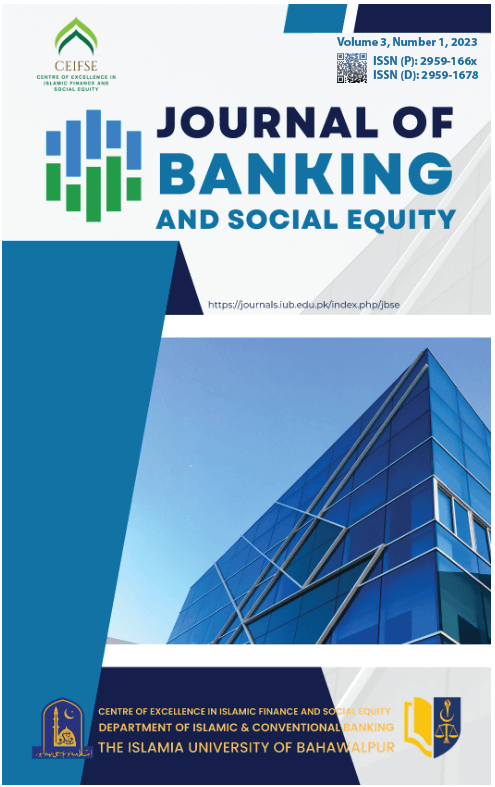Role of Financial Inclusion in Promoting Financial Performance: Evidence from Microfinance Institutions of Pakistan
Keywords:
Financial Inclusion, Financial Performance, Microfinance Institutions, Pakistan, Quantile Panel RegressionAbstract
This study examines the role of financial inclusion (FI) to encourage financial performance (FP) of microfinance institutions (MIs). This study investigates the role of FI considering number of branches and average loan balance per borrower as major determinants to promote FP of MIs. This study used quantile panel data regression analysis to analyze the collected data from the sample of 17 MIs of Pakistan during 2014 to 2019. The findings of this research analysis suggest that number of branches as determinants of FI have significant and positive influence on FP of the MIs. As the number of branches of MIs increases, MIs tend to have a higher level of FP. On the other hand, this study finds a significant but negative relationship between average loan balances per borrower to GNI per capita (ALB) with the FP of MIs. It is normal practice of MIs that they target a few high-profile clients to attain their financial sustainability as low income and poor customers are unable to pay the market competitive price against financial services and products. Continuous increasing focus on profitability results into having very few numbers of poor and low-income customers in Pakistan. The findings of this study are helpful for the policy makers and regulators to design and implement the policies related to FI along with financial growth of MIs.
Downloads
Published
How to Cite
Issue
Section
License
Copyright (c) 2023 Zunera Khalid, Muhammad Kashif Ali, Farah Yasser

This work is licensed under a Creative Commons Attribution-NonCommercial 4.0 International License.






